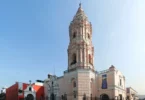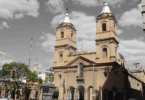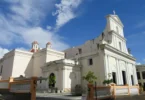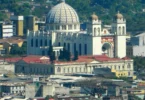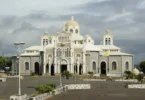Introduction
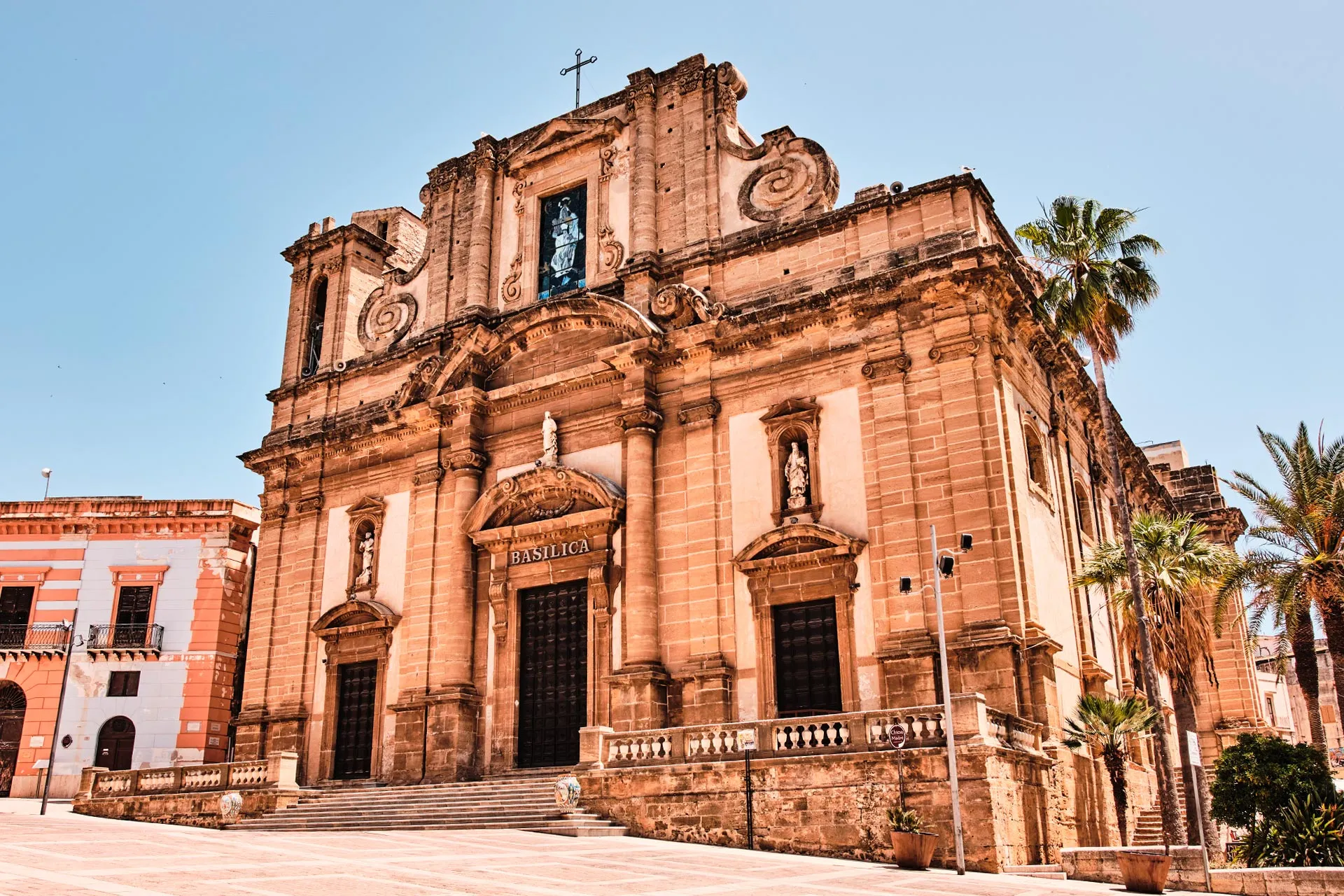
The Basilica of Maria Santissima del Soccorso, also known as the Mother Church or Matrix Church, stands as the principal Catholic place of worship in the city of Sciacca, located in Piazza Don Minzoni. It holds a place of great historical, architectural, and spiritual significance for the local community. Dedicated to Our Lady of Perpetual Help, the basilica serves not only as the city’s religious heart but also as a symbol of devotion, tradition, and cultural identity. Its commanding presence at the center of the city makes it a focal point for both liturgical celebrations and civic life.
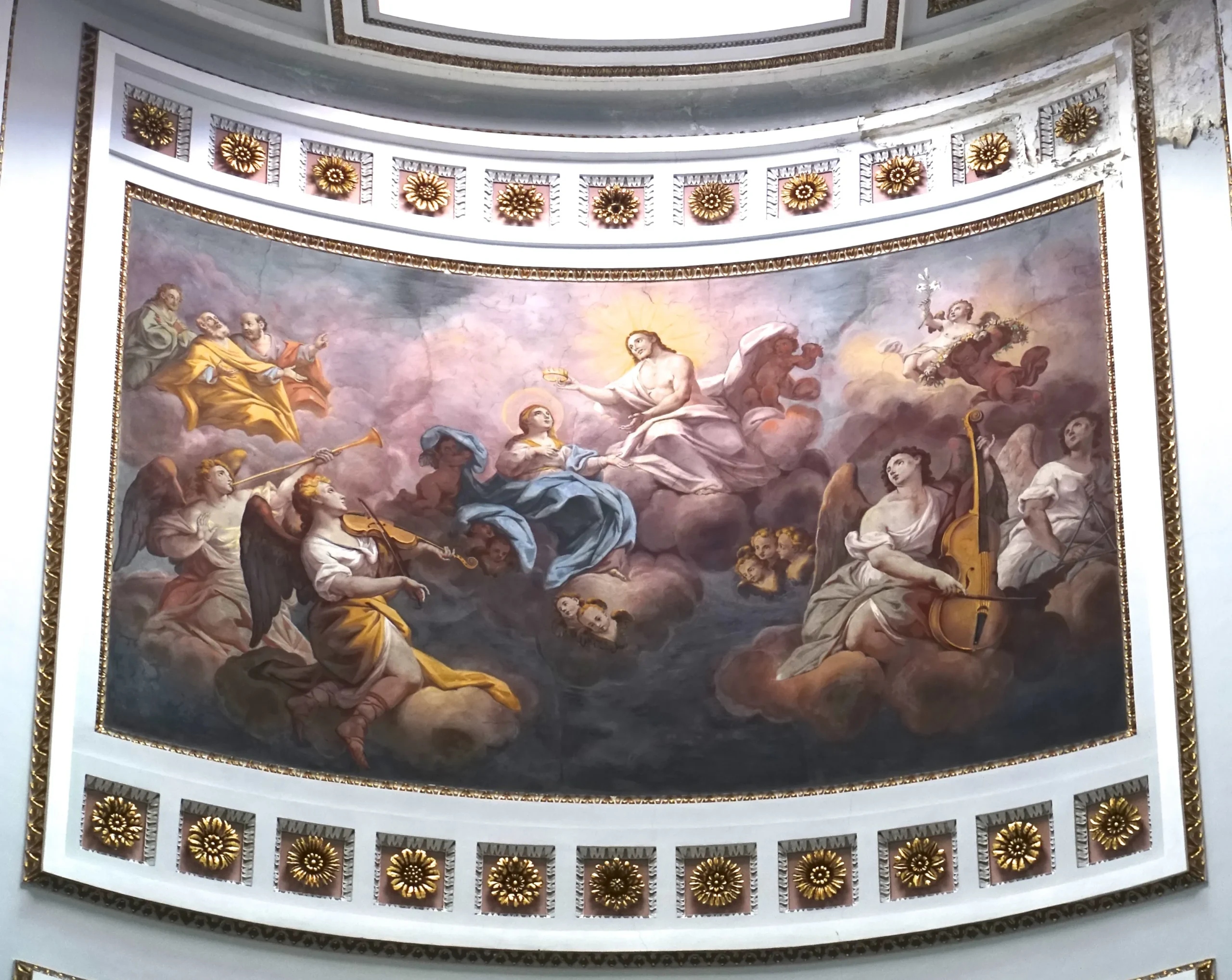
The Basilica of Maria Santissima del Soccorso in Sciacca boasts a rich and layered history that spans multiple eras, reflecting the religious, social, and political evolution of the region. From its Byzantine roots to its elevation as a minor basilica in the 20th century, the church has remained a central place of faith and heritage for the people of Sciacca.
Byzantine Era: The Origins of Worship
The earliest place of worship in Sciacca was a temple dedicated to Saint Peter, known as the Church of San Pietro in Castro. This original church was located within the fortified walls of the old castle and served as the town’s first mother church. It laid the spiritual foundation upon which future religious developments in Sciacca would be built.
Norman Era: Founding of the Basilica
The present-day basilica was founded in 1108 by Juliet the Norman, daughter of Count Roger I of Sicily. Situated in the heart of the ancient Ruccera district, the church was part of Juliet’s personal spiritual journey, influenced by her complicated relationship with Robert I of Bassavilla—a union her father opposed. Juliet, known for her penitent devotion, dedicated this grand temple as a symbol of faith and repentance. Among the many churches sponsored during her rule from 1100 to 1136, this was the most significant.
An alternate account credits the basilica’s founding to Count Roger himself, who commissioned it as a votive offering to the Virgin Mary, under the title “Assunta” (the Assumption of Mary). It was customary for the House of Altavilla (Hauteville dynasty) to establish religious buildings in locations where fierce battles had taken place during the Christian reconquest from Arab rule. The architectural design of the medieval church was entrusted to Isidoro Incisa. Although the structure has undergone numerous reconstructions, key features such as the eastern-facing apses and massive Gothic arches from the 15th century remain intact today.
Aragonese Era: A Civic and Spiritual Center
During the Aragonese rule, the basilica functioned as more than just a religious site—it was also a center for civic life. Local political and administrative decisions were often discussed and finalized within its sacred walls. One of the most notable events during this time was the episcopal ordination on June 30, 1443 of Matteo de Gallo and Gimarra, a member of the Order of Friars Minor Conventual. He would later be recognized as a Blessed of the Catholic Church, adding spiritual prestige to the basilica’s legacy.
Spanish Era: Plague, Processions, and Miracles
As a seaside city, Sciacca was vulnerable to the spread of plague epidemics, particularly those linked to outbreaks in Palermo (1624) and the broader Italian peninsula (1630). Amidst recurring waves of disease, the city turned to the Virgin Mary for protection. On February 1, 1626, the population organized a devotional procession, known locally as “Û vutu”, from the Church of Sant’Agostino to the mother church to plead for deliverance. The following day, members of the sailors’ guild carried the statue of the Madonna del Soccorso along the same route. Upon reaching the Piccola Maestranza area, a lightning bolt struck the base of the statue, and a mysterious smoke enveloped the city. Miraculously, the plague ceased, and all who were ill were cured. This event marked the beginning of Sciacca’s most cherished religious tradition—the annual celebration of the Madonna del Soccorso.
Rebuilding and Rededication (1656–1686)
The original church, built with a Latin cross floor plan, featured three naves, Norman arches, and Ionic columns. On December 15, 1656, a structural failure caused part of the façade to collapse. After much debate, it was decided to rebuild the basilica while preserving the Gothic arches and eastern apses from the Norman era. The reconstruction, carried out between 1656 and 1686, followed a new design by architect Michele Blasco. Following its completion, the church was rededicated to the Blessed Virgin Mary of Help (Maria Santissima del Soccorso), who was proclaimed the new patron saint of Sciacca—a title that endures to this day.
Contemporary Era: Artistic Enhancements and Papal Recognition
Significant artistic and structural enhancements took place in the 19th century. In 1829, Salvatore Gravanti enriched the basilica with an ornate decorative and stucco interior, while Tommaso Rossi, son of the famed painter Mariano Rossi, added vibrant frescoes. In July 1991, in recognition of its historical, cultural, and spiritual importance, Pope John Paul II officially elevated the church to the status of a Minor Basilica, solidifying its role as a landmark of faith in the region.
Architecture of Basilica of Maria Santissima del Soccorso, Sciacca, Italy
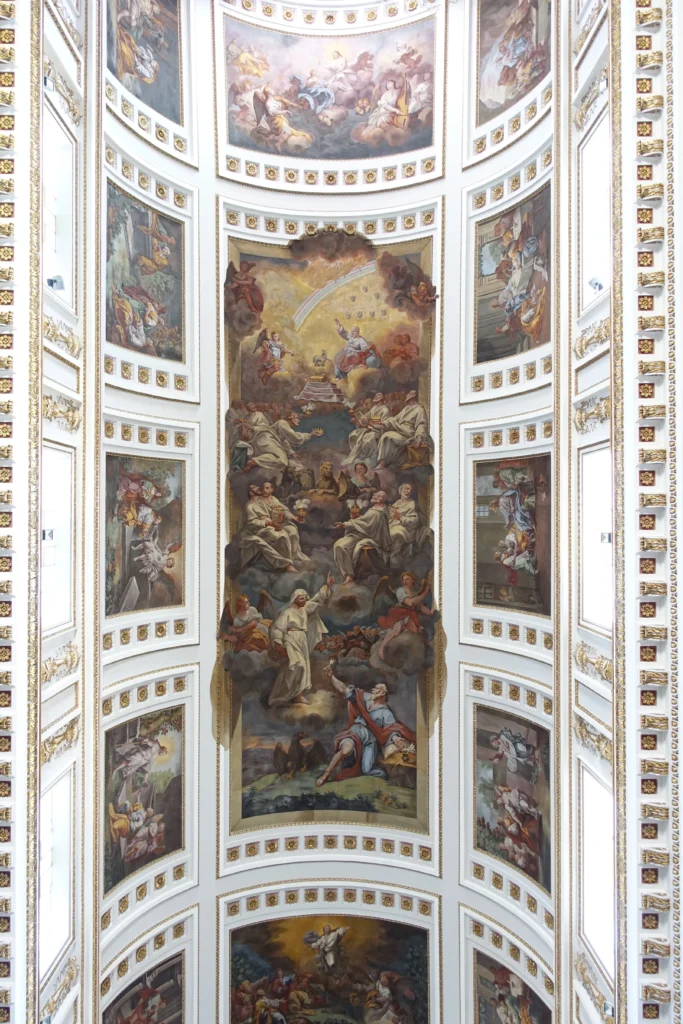
Architect : Isidore Engraved
Architectural style : Norman architecture.
Facade of the Basilica of Maria Santissima del Soccorso
The facade of the Basilica of Maria Santissima del Soccorso is a stunning example of architectural harmony, where Baroque exuberance meets Renaissance refinement, creating a visually captivating entrance that reflects the grandeur and sacredness of the structure. Positioned on a gentle slope, the basilica’s elevated setting is accentuated by a carefully designed approach that enhances its monumental presence in Piazza Don Minzoni, Sciacca.
Access and Churchyard
The basilica is accessed via a short flight of steps that connects the raised floor level of the church to the adjacent road. These steps lead to a small enclosed churchyard, defined by elegant balustrades featuring amphora-shaped columns—a traditional design element that adds a classic Sicilian touch. This space provides a transitional area between the urban surroundings and the sacred interior.
Tripartite Façade Design
The façade is designed in a tripartite layout, vertically segmented by prominent stone ribs formed by twin pilasters. These pilasters rest on high plinths and frame the three arched entrances—a larger central portal flanked by two smaller ones. The use of exposed tuff stone in recent restorations provides a rich chromatic contrast against the more limited plastered surfaces, highlighting the depth and detail of the architectural elements. The north and south façades are similarly defined by single ashlar pilasters, which separate and frame the windows, creating a sense of rhythm and verticality. A horizontal cornice, detailed with ornate moldings and string courses, divides the façade into two distinct orders, giving the structure its classical architectural hierarchy.
Upper Order and Pediment
The central portion of the upper façade is crowned by an incomplete pediment, which visually mirrors the architecture of the lower order. This pediment is dramatically connected to the first level by grand curlicue volutes, adding dynamic movement to the structure. These volutes, along with buttresses that span the entire upper length of the roofline, provide both aesthetic unity and structural continuity.
Architectural and Sculptural Elements of the Façade
The façade of the Basilica of Maria Santissima del Soccorso is a masterful blend of Baroque grandeur and Renaissance refinement, marked by its dynamic vertical lines and sculptural richness. Dominated by Ionic columns and capitals that extend through both architectural levels, the structure creates a sense of upward movement, leading the eye to an elaborate tympanum of broken and overlapping arches crowning the main portal. This central entrance is further elevated by a sculptural group crafted in 1541 by the renowned Sicilian sculptors Giandomenico and Antonino Gagini. Their works include statues of Santa Maria Maddalena, placed above the main doorway, flanked by Saint Peter and Saint Paul, who reside in niches over the side entrances—together forming a powerful theological triad. On the upper level, a large historiated stained-glass window framed by ornate volutes and topped with a triangular tympanum adds both light and ornamentation. The façade is completed by a wrought iron cross at the apex, symbolizing the church’s spiritual mission. Together, these elements offer a compelling visual narrative that bridges art, architecture, and faith.
Side Entrances and Additional Statues
The right side entrance, accessible from Corso Vittorio Emanuele, features a flight of steps leading to a statue of San Calogero, accompanied by the Fontana del Mascherone, a decorative fountain that was originally part of the now-lost Church of Santa Maria delle Giummare. On the left side, the entrance from Vicolo Duomo is adorned with a statue of Saint John the Baptist, lending solemn dignity to this secondary access point. All of these statues are believed to have once belonged to a grand tribune structure that originally adorned the presbytery, later dismantled during interior renovations. Today, they enrich the exterior of the basilica with their artistic presence and religious significance.
Interior Architecture and Chapels of the Basilica of Maria Santissima del Soccorso
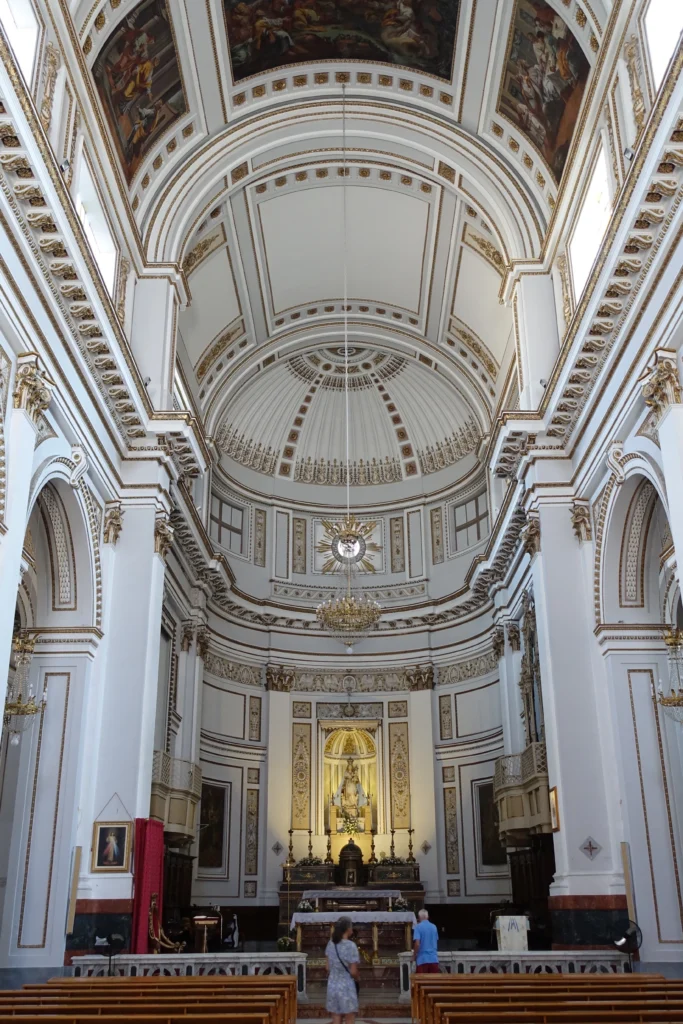
The interior of the Basilica of Maria Santissima del Soccorso reveals a rich history shaped by centuries of reconstruction and artistic refinement. Following the 17th-century renovations, significant changes were made to the church’s structural elements. The original Gothic-style pointed arches were replaced with rounded arches, and the slender columns of the medieval structure were transformed into massive supporting pillars. Originally, the church featured 14 chapels and 23 altars. Today, the interior houses four chapels in the minor naves, two in the transept, two apses, and a spacious central chapel.
Central Nave and Ceiling Frescoes
The ceiling of the central nave is a visual masterpiece, entirely covered in frescoes painted in 1829 by Tommaso Rossi, the son of renowned artist Mariano Rossi. These frescoes portray apocalyptic themes inspired by the Book of Revelation, focusing on the Throne of God and the Celestial Court. Along the lateral walls, ten grand paintings depict key episodes from the life of Saint Mary Magdalene. Two prominent scenes, the Glory of Mary and the Transfiguration, dominate the central axis of the nave, positioned at the entrance and near the presbytery, respectively.
Right Aisle – Chapels and Artistic Heritage
The right aisle of the Basilica of Maria Santissima del Soccorso presents a sequence of richly adorned chapels, each housing significant artistic and devotional elements. In the first span, the Chapel of the Madonna delle Vittorie holds the marble sarcophagus of Bartolomeo Tagliavia (†1551), an elegant piece attributed to a follower of Antonello Gagini’s renowned sculptural school. Originating from the Chapel of the Madonna di Monserrato, it shares the space with the Madonna dei Raggi, a luminous painting named after the radiant beams that emanate from the Virgin’s hands—an anonymous yet striking artwork.
Moving to the second span, the Chapel of Santa Maria Maddalena features a wooden statue of the Penitent Mary Magdalene, replacing a previously installed canvas by Francesco Lanzirotto that depicted the saint among other blessed figures. This substitution emphasizes a deeper sense of penitence and solitude associated with Mary Magdalene’s spiritual transformation.
The third span, marking the southern side entrance, is distinguished by an intricately carved wooden pulpit, dated 1764, the craftsmanship of Giuseppe Cannella, who also contributed to the design of the basilica’s choir and confessionals. This element adds a layer of 18th-century Sicilian woodwork to the church’s interior artistry. In the fourth span, the Chapel of San Calogero showcases a wooden statue of the saint, depicted with an archer and a doe—an iconography that reflects San Calogero’s legacy as a hermit and healer. The statue is attributed to Nicolò Milanti of Trapani. This chapel also contains a revered niche with a statue of Saint Thérèse of Lisieux, underscoring the blend of ancient and modern devotion. The fifth span houses the Chapel of Sant’Alfonso, dedicated to Saint Alphonsus, a smaller but still spiritually significant space within the basilica. Though less elaborately documented, it continues the rich tradition of honoring saints in individual chapels throughout the church’s interior.
Left Aisle – Chapels and Religious Treasures
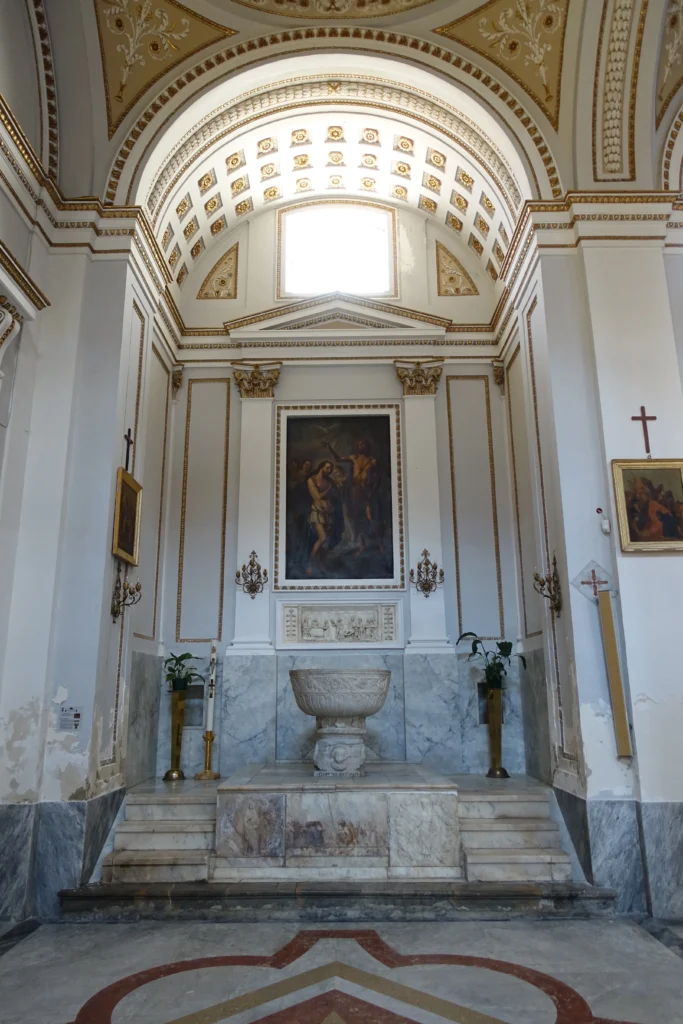
The left aisle of the basilica is rich in religious and artistic significance, housing several chapels dedicated to various saints and devotions. Each chapel is a unique representation of the church’s historical and spiritual journey. In the Chapel of Saint John the Baptist, the marble baptismal font from 1495 stands as a testament to the craftsmanship of the Gagini workshop. This font, commissioned by Archpriest Antonio De Piscibus and patron Andrea Burgio, is accompanied by carved panels depicting Saint Mary Magdalene and Saint Calogero, as well as a 16th-century relief of the Beheading of Saint John the Baptist. The focal painting of The Baptism of Christ, created by Francesco Lanzirotto, draws visitors into the sacred narrative of Christ’s baptism. The Chapel of the Madonna di Monserrato features a revered statue of the Madonna, attributed to Domenico Gagini, as well as the Madonna delle Grazie (or Madonna del Cardellino), both of which have historical ties to the medieval church on this site.
The northern side entrance provides a transitional space between the interior sanctity of the basilica and the exterior world, marking a significant boundary for those entering the sacred space. In the Chapel of Saint Anthony of Padua, a wooden statue of the saint sits on the altar, with a side niche housing the statue of Saint Paschal Baylón. The chapel reflects the devotion of the faithful to these two revered figures. The Chapel of the Sacred Heart of Jesus concludes the left aisle, with statues of the Sacred Heart of Jesus and Saint Vincent Ferrer, emphasizing themes of divine mercy, compassion, and evangelization. Each chapel in the left aisle offers a unique spiritual experience, enhancing the overall sacred atmosphere of the basilica and continuing the tradition of devotion that has defined this important religious site for centuries.
Transept and Apsidioles
Right Arm: Chapel of the Madonna della Catena
The Chapel of the Madonna della Catena, located in the right arm of the transept, houses a marble statue of the Madonna della Catena. This statue, dating back to 1506, was created by Bartolomeo Berrettaro and originally belonged to the ancient Maurici Chapel. The image of the Madonna is surrounded by the spiritual history of the region, emphasizing her role as a central figure in local devotion.
Left Arm: Chapel of St. Joseph
Originally dedicated to St. Peter the Apostle, the left arm of the transept now holds the Chapel of St. Joseph. The original image of St. Peter was lost over time, but the current statue, which depicts St. Joseph, came from the Chapel of the Madonna di Monserrato. This chapel now honors St. Joseph, emphasizing his paternal role in the Holy Family.
Apsidioles and Chapels
The Right Apse, dedicated to the Chapel of the Blessed Sacrament, is a masterpiece of sacred art. The marble tabernacle, crafted in 1538 by the renowned sculptors Giandomenico and Antonino Gagini, is adorned with high-relief sculptures depicting Saint Peter and Saint Paul. The tabernacle also narrates the Passion of Jesus through intricate scenes carved into the pillars. The left pillar portrays the Prayer in the Garden of Olives, Judas’ Kiss and Betrayal, and the Capture of Jesus, while the right pillar depicts the Flagellation of Jesus, the Trial of Jesus, and the Ascent to Calvary. Above the tabernacle, a canopy, supported by two tiers of adoring angels, crowns the central register. The tabernacle is further embellished by an elaborate cornice featuring cherubic heads, and at its summit, a bust of God the Father blesses and oversees the entire scene, adding a divine presence to the sacred space.
On the opposite side, the Left Apse houses the Chapel of the Holy Crucifix, where a 16th-century wooden crucifix stands as a powerful symbol of Christ’s sacrifice. This simple yet profound image of Christ on the cross is a central focus of devotion and reflection within the chapel, inviting visitors to meditate on the ultimate act of love and redemption.
High Altar
At the center of the basilica’s high altar is the statue of the Madonna del Soccorso, created by Giuliano Mancino and Bartolomeo Berrettaro. Commissioned in 1503 and completed in 1504, this marble sculpture was initially intended for the church of San Barnaba, located near what is now the Church of Sant’Agostino. However, after a series of seismic events and political changes, the statue was moved to the mother church where it was enthroned on the main altar. Accompanying the statue are two large canvases: one depicting the Martyrdom of St. Peter the Apostle and the other illustrating the Holy Family of Nazareth, featuring St. Anne and St. Joachim. These artworks complement the rich devotional atmosphere of the high altar. Additionally, the altar is surrounded by a stunning decorative stucco apparatus, further elevating the sacred space.
On either side of the high altar is the choir, composed of 40 wooden stalls designed by Giuseppe Cannella and his workshop in 1764. Cannella, also the creator of the basilica’s pulpit and confessionals, contributed to the interior’s harmonious design. The choir provides a place for the clergy and choir members to participate in the liturgy while adding to the overall aesthetic unity of the basilica.
Sacristy and Parish Artifacts
The sacristy and surrounding parish areas are home to a rich collection of religious and historical artifacts that reflect the cultural and spiritual heritage of the basilica. Among these are several notable marble panels and coats of arms, including the city’s ancient emblem featuring Saint Mary Magdalene flanked by rampant lions, as well as the coats of arms of the Perollo and Garro-Maurici families. Created by Giandomenico Gagini in 1577, these pieces offer a glimpse into the city’s noble lineage. In addition to these, paintings such as the Martyrdom of Saint Lawrence and Martyrdom of Saint Peter provide powerful depictions of the early Christian martyrs. Statues like the Santa Maria degli Angeli, the Santa Maria di Gesù, and the Madonna di Loreto are significant devotional pieces, many of which date back to the 15th century. The sacristy also houses an ancient painting of Mary Magdalene, along with a wooden Crucifix that once adorned the center of the ancient church’s ceiling. Additionally, the Hall of San Rocco contains a painting of the saint by Giuseppe Sabella, and the sarcophagus of 16th-century botanist Gerardo Noceto, located beneath the sacristy, serves as a unique historical marker of Sciacca’s intellectual legacy.
Feast Day
Feast Day : 08 September
The feast of Maria Santissima del Soccorso, the patroness of Sciacca, is celebrated on September 8th each year. This day marks the Feast of the Nativity of the Blessed Virgin Mary, and it is a significant religious and cultural event in Sciacca, with processions, festivities, and special church services.
Church Mass Timing
Monday : 9:00 AM.
Tuesday : 9:00 AM.
Wednesday : 9:00 AM.
Thursday : 9:00 AM.
Friday : 9:00 AM.
Saturday : 9:30 AM.
Sunday : 8:30 AM, 11:00 AM, 6:30 PM.
Church Opening Time:
Monday : 8:00 am – 12:00 pm., 4:00 pm – 8:00 pm.
Tuesday : 8:00 am – 12:00 pm., 4:00 pm – 8:00 pm.
Wednesday : 8:00 am – 12:00 pm., 4:00 pm – 8:00 pm.
Thursday : 8:00 am – 12:00 pm., 4:00 pm – 8:00 pm.
Friday : 8:00 am – 12:00 pm., 4:00 pm – 8:00 pm.
Saturday : 8:00 am – 12:00 pm., 4:00 pm – 8:00 pm.
Sunday : 8:00 am – 12:00 pm., 4:00 pm – 8:00 pm.
Contact Info
Addres:
Basilica of Maria Santissima del Soccorso
Piazza Duomo, 92019 Sciacca AG, Italy
Phone : +39 0925 21693
Accommodations
Connectivities
Airway
Basilica of Maria Santissima del Soccorso, Sciacca, Italy, to Helipad Hospital of Sciacca, distance between 9 min (3.1 km) via Via dei Cappuccini and Via Lioni.
Railway
Basilica of Maria Santissima del Soccorso, Sciacca, Italy, to Castelvetrano Railway Station, distance between 38 min (36.3 km) via SS 115 Sud Occidentale Sicula/SS115.



